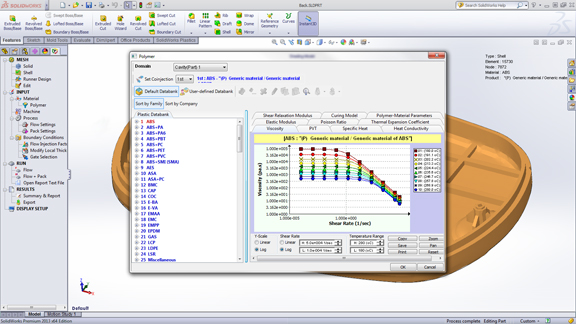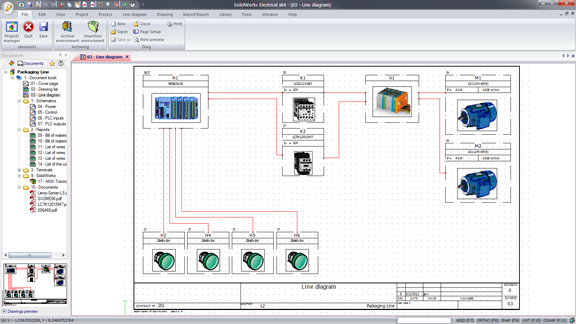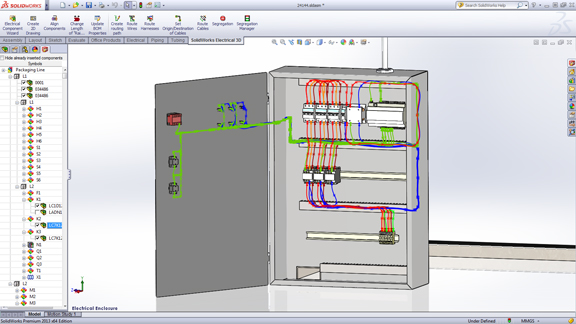Latest News
September 11, 2012
As it gets ready for another robust release, SolidWorks is also turning its attention to the two areas that, up to recently, have been served by partner products: electrical and plastic design.
The two new add-ons, SolidWorks Electrical and SolidWorks Plastics, are not part of the core SolidWorks design software. They mark the company’s introduction of two new products, designed to address the incorporation of electrical components and injection-molded plastic parts in product design.
SW Electrical is particularly useful for designing products where electrical and mechanical components must fit together. The package offers single- and multi-line schematics, bi-directional associativity between 2D and 3D designs, automatic wire routing, and bill of materials (BOM) integration.
The package is available in several versions: SW Electrical (2D schematics design); SW Electrical 3D (for incorporating 2D electrical schematics into 3D design); and SW Electrical Professional (the combination of both Electrical and Electrical 3D).
SW Plastics, according to Fielder Hiss, SolidWorks’ VP of product management, is “not for traditional mold designers, not for traditional analysts, but for the average plastic part designers.” For advanced users, the company offers SW Plastic Professional and SW Plastic Premium.
From inside SolidWorks’ modeling environment, the SW Plastics plug-in lets you simulate the injection molding process in a digital environment. The software could help you identify, among other things, the best placement of injection gate, potential problems with air traps, sink marks, weld lines, and cavities.
In upcoming 2013 release, SolidWorks CAD software offers a number of functions aimed at plastic part design. The option to sketch and create conic shapes, for example, will be one of the highlights in that respect.
A large part of the value of SW Electrical and SW Plastics come from the databases: the library of electrical symbols, wire cables, and components; and the list of materials used for manufacturing plastic parts. These databases allow you to drag and drop relevant components from a library into a diagram and link them together to create a schematic. The plastic materials already populated with thermal conductivity, viscosity, and other properties allow you to select them from a drop-down list for your mold simulation sessions.
In recent years, rival CAD vendors like PTC has addressed the need to embed electrical designs with Creo MCAD-ECAD Collaboration Extension. Similarly, Autodesk, another rival, has been able to capture the plastic design market with its Autodesk Moldflow software.
Subscribe to our FREE magazine, FREE email newsletters or both!
Latest News
About the Author
Kenneth Wong is Digital Engineering’s resident blogger and senior editor. Email him at [email protected] or share your thoughts on this article at digitaleng.news/facebook.
Follow DE








